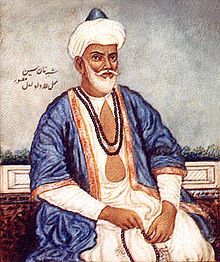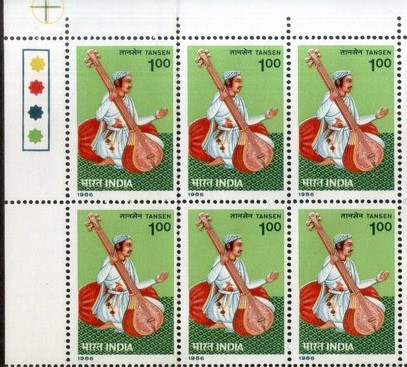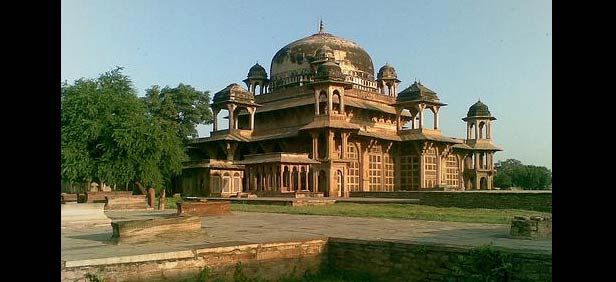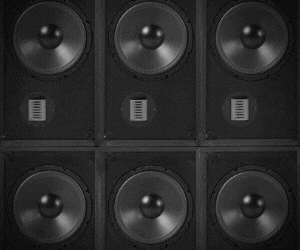Early morning today, I saw a Tweet from the famous Twitter handle @MarathiRT that it is Miyan Tansen’s birthday. Though the birthdays of historical personalities, especially those who graced Medieval India, are assisted with confusion and multiple theories, a blog tribute to assess their contribution is always a delight! The personality of Miyan Tansen, born as Ramtanu Mishra has many facets. He has a mention in a lot of Musical folktales that have been orally passed on by a teacher to his student for the past many generations! That he lit a lamp by singing
Raag Deepak and his singing of Raag Miyan Malhar resulted in a rainfall are the most popular of these folk-tales.
He is also credited for creating Raags like Darbari, Miyan ki Malhar, Miyan ki Todi, Miyan ki Sarang. The
Raags that begin with the word Miyan are said to be his creation as Emperor Akbar conferred this title to honor him.

However, what could be the reason that almost all Gharanas or Schools of North Indian Classical Music try to trace their origin or lineage to Miyan Tansen? What was his significance in terms of evolution of modern Indian Classical Music? What was the significance of the period he lived? Ustad Zakir Hussain, in one of his recent interviews said that the concept of Fusion is not new to India. (Link given). To quote what he said, The north Indian classical music that anybody performs is actually a fusion. The sufi poet-saint Amir Khusro was so taken by the music that was performed in the temples,which was called haveli sangeet or prabandh gayaki. It was close to dhrupad style. He was taken in by the soulfulness of the music and the devotion in the music towards the gods and goddesses. The devotional music reminded Khusro of the kaul and kalbana, which were the sufi singing forms of meditation, now known as Qawwali. He took the forms from temples and the kaul and kalbana and meshed them together and came up with the form of music now known as khayal, which all north Indian classical musicians perform.

There is a gap of almost two centuries between Khusro and Tansen. So the experiments carried out by Khusro and the
subsequent changes on the musical field must have started toreflect at the larger stage during Tansen’s period. Records say that Tansen was a Dhrupad Singer and during his time the Bhakti Sangeet was undergoing a shift from Sanskrit to the local language, the Brajbhasha. It is said that Tansen’s compositions highlight this trend. It is also said that Tansen found a mentor in Muhammad Ghaus and the latter a representative of the Sufi tradition. Tansen, on the other hand, studied Dhrupad from Swami Haridas. While Muhammad Ghaus lived in Gwalior, Swami Haridas was originally from Vrindavan but was a musician at the Gwalior court of Raja Man Singh Tomar. So it is all good to imagine the fusion of Sufism and Bhakti Sangeet at and around the city of Gwalior. No wonder, the Gwalior Gharana
(or the School of Music) is the oldest Gharana in modern Indian Khyaal Music which we all follow even today. As per Maestro Hussain, the Khyaal form of Music is the fusion of Qawwali and Dhrupad. These two forms find their origin in
Sufism and Bhakti Sangeet respectively.

The significance of Tansen in modern Indian Classical Music is as follows:
a. Tansen’s son Bilas Khan is said to have created Raag Bilaskhani Todi while he was grief stuck due to Tansen’s death. The said Raag is a popular morning melody in North Indian Classical Music today.
b. Bilas Khan had a son-in-law named Lal Khan. Lal Khan had four sons and two of them were Miyan Manrang and Bhupat Khan. Some works describe Manrang and Bhupat Khan as the same person. However many compositions or
Bandishes of Miyan Manrang are sung even today in the Khyaal style of Indian Classical Music.
c. Bhupat Khan had a son named Sidhar Khan Dadhi. He is said to have invented the Tabla. Sidhar Khan Dadhi was the first cousin of Niyamat Khan ‘Sadarang’ and they flourished during the reign of the Mughal Emperor Muhammad Shah. Sadarang was the penname used by Niyamat Khan and he composed many Bandishes honoring or mentioning the emperor Muhammad Shah. These Bandishes are sung even today and are very popular. This was in the 18th century and almost two hundred years after the period of Tansen. Feroze Khan ‘Adarang’ was the nephew of Niyamat Khan ‘Sadarang’ and his Bandishes are also popular among Classical Vocalists.
d. The Dagar family of Dhrupad singers believe themselves to be the descendants of Swami Haridas. Along with Swami Haridas &Tansen, Baiju Bawra – another legendary Dhrupad Singer – also finds mention in the same era. It is also said that he defeated Tansen in a Jugalbandi in the court of Emperor Akbar. Bollywood has celebrated the legends of both Tansen and Baiju Bawra through movies Sangeet Samrat Tansen and Baiju Bawra respectively.
e. It is also said that after Tansen, the musical instrument Rabab (which has Afghan origins) was fused with the
Veena (arguably the oldest Indian instrument) to create the modern day Sarod. However there are multiple views on this theory and not many people agree with it.

While ending this write-up, let me again emphasize on the fact that Music of a region is a product of countless influences overlapping with each other. As we day trace modern day Khyaal to the overlap of Sufism and Bhakti Sangeet, we also have to admit that it is difficult to separate the two forms. Any attempts to do that would destroy the very fabric of human interaction and evolution. The legend of Tansen could be seen as a connect between Khusro and modern Indian Music. Overlap of Musical traditions began with Khusro while they were accelerated during Tansen. But the modern Indian Secular Music owes a lot to Tansen who gulped both the Sufi and Bhakti traditions of Medieval India and hence remains a landmark figure!
References: https://en.wikipedia.org/wiki/Tansen
https://en.wikipedia.org/wiki/Amir_Khusrow
http://indianexpress.com/article/lifestyle/art-and-culture/fusion-has-existed-in-india-for-a-thousand-years-tabla-maestro-zakir-hussain/
Photo References: https://en.wikipedia.org/wiki/Tansen
http://journeymart.com/de/india/madhya-pradesh/gwalior/tomb-of-tansen.aspx









